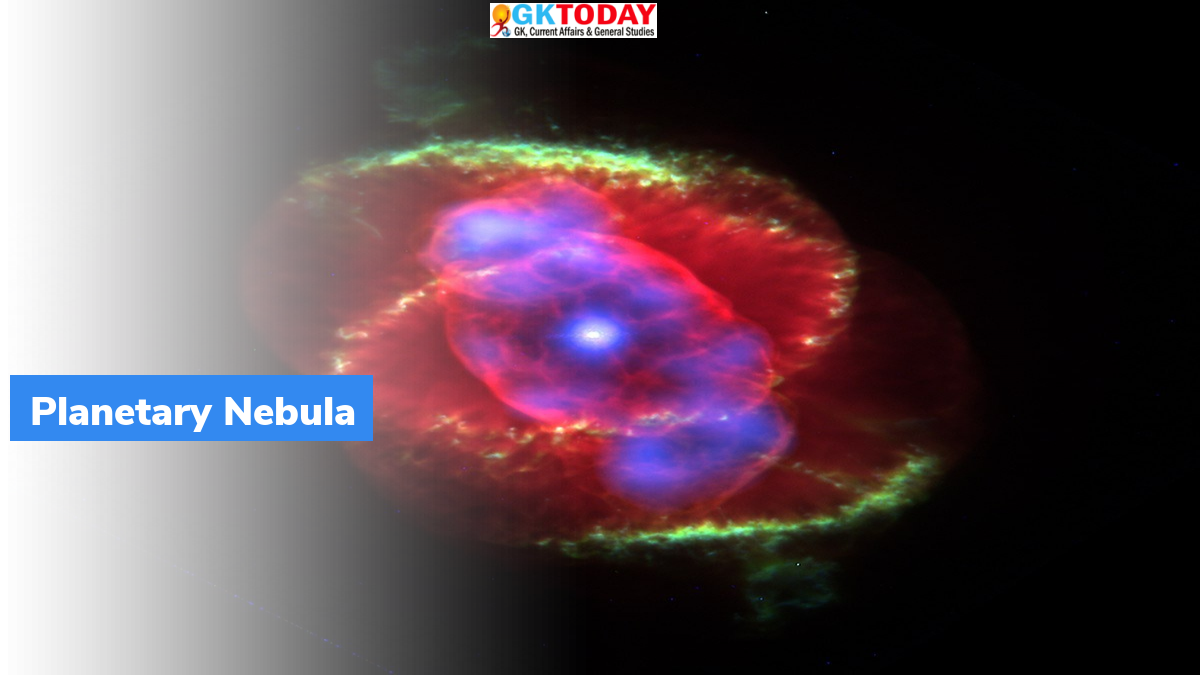Planetary Nebula
Planetary Nebula is a type of Emission Nebula. Emission Nebula is nothing but ionized gases. These ionized gases emit light of different wavelengths. The Planetary Nebula consists of ionized gases that are ejected from red giant stars.
Who discovered Planetary Nebula?
Planetary Nebula was discovered by Charles Messier in 1764. The first planetary nebula was Dumbbell Nebula. It was discovered in the constellation Vulpecula. Charles listed Planetary Nebula as M27 in his catalogue of nebulous objects.
How are Planetary Nebula formed?
Towards the end of the lives of the stars, the hydrogen in the core starts to diminish. The gravity of the star compresses the core. With the increase in compression, the temperature increases tremendously to 100 million Kelvin in the core. This releases high energy and is distributed over larger area. During this stage, the helium fuses to form carbon and oxygen. Here, the star has a helium burning shell surrounded by a hydrogen burning shell. That is, in the inner shell helium fusion occurs and in the outer shell hydrogen fusion occurs. In the outer shell the temperature reaches to 30,000 Kelvin and emits Ultra Violet rays. This makes the star to shine as Planetary Nebula.
What is the role of Planetary Nebula in the evolution of Milky Way?
The Planetary Nebula has a major role in the evolution of Milky Way. The new born stars in Milky Way are made of hydrogen and helium. As they evolve, they create heavier elements. These heavier elements are expelled by strong stellar winds. Stellar winds are winds that are ejected from the upper atmosphere of a star. The Planetary Nebula is usually made of heavier elements such as carbon, nitrogen and oxygen. These heavier elements are recycled in to the interstellar medium by the stellar winds. Thus, more hydrogen and helium are available for the formation of new stars. This way, the Planetary Nebula helps in the evolution of Milky Way.
What are the characteristics of Planetary Nebula?
- The Planetary Nebula is made of rarefied gases.
- The densities of young Planetary Nebula are higher
- The Planetary Nebula is described as Matter Bounded or Radiation Bounded. If the nebula has no enough matter to absorb all the UV rays emitted by the star, it is called matter bounded. If the UV photons emitted by the star are not enough to ionize all the surrounding gas, it is called Radiation Bounded.
How is Planetary Nebula distributed in Milky Way Galaxy?
There are 3000 Planetary Nebula in the Milky Way galaxy. The lifetime of Planetary Nebula in the Mil Way is short. Most of the Planetary Nebula in the galaxy are found near the galactic center of the galaxy. Galactic center is the rotational center of the Milky Way galaxy. For instance, the sun is the rotational centre of the earth.


